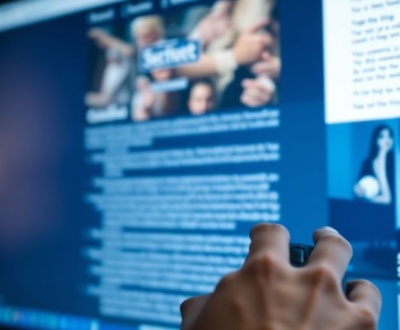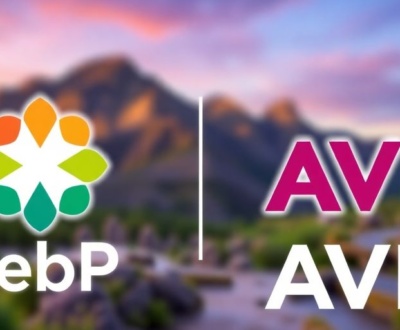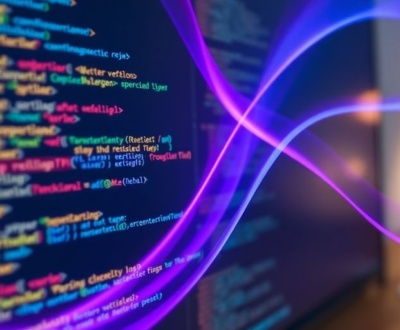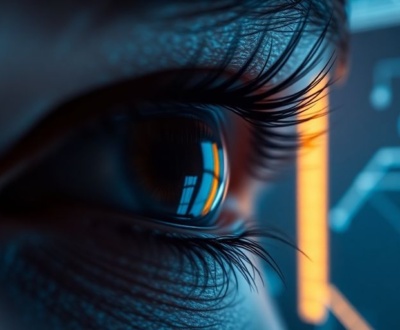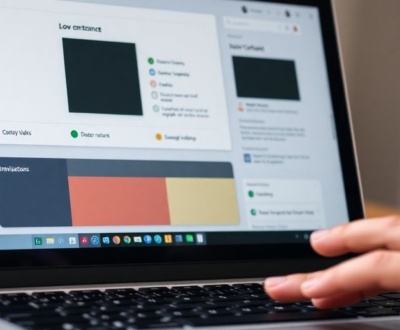So, you’re trying to figure out if AI video or Lottie is better for showing off your app or website. It’s a pretty common question these days, especially with all the cool stuff you can do with both. We’ll break down when each one makes sense, looking at things like how they perform and what kind of visuals they create. Basically, we’ll help you pick the right tool for your interface demos, whether you need something super realistic or something light and interactive. It’s all about making your demo look good and work well, right?
Key Takeaways
- AI video is great for complex user journeys and showing off realistic visuals, making it good for quick prototypes.
- Lottie is better for interactive parts and small animations, as it helps with web performance and works on different platforms.
- AI video vs Lottie interface animation: AI video handles detailed, longer sequences, while Lottie is for efficient, scalable animations.
- You can use both AI video and Lottie together to make your demos even better, combining their strengths.
- Both AI and Lottie tools are always getting better, which will change how we design and build user interfaces in the future.
Understanding AI Video for Interface Demos
Leveraging AI for Dynamic Content Generation
AI is changing how we create interface demos. Instead of relying on traditional methods, we can now use AI to generate dynamic content quickly. This means creating videos that adapt to different user scenarios or data inputs is easier than ever. AI video APIs are becoming more accessible, allowing even small teams to produce high-quality demos without extensive resources. For example, you can input a basic design and have AI generate a video showcasing how a user might interact with it. This saves time and allows for rapid iteration on design concepts.
AI Tools for Enhanced Animation Creation
Several AI tools are now available to enhance animation creation for interface demos. These tools can help with tasks like:
- Generating realistic facial expressions and body movements.
- Creating smooth transitions between different interface states.
- Adding subtle animations that improve the overall user experience.
Tools like Runway and HeyGen are making it easier to create professional-looking animations without needing advanced animation skills. The top AI Video APIs offer features like text-to-video and image-to-video, streamlining the animation process.
Benefits of AI-Powered Video in Demos
AI-powered video offers several key benefits for interface demos:
- Speed: AI can generate video content much faster than traditional methods.
- Cost-Effectiveness: Reduces the need for expensive equipment and personnel.
- Customization: Easily adapt videos to different audiences or scenarios.
Using AI video can significantly improve the efficiency of your demo creation process. It allows you to focus on the design and functionality of your interface, rather than spending time on tedious video editing tasks. This can lead to faster development cycles and better overall product quality.
Exploring Lottie for Interface Animation

Lottie has become a pretty big deal in the world of interface animation. It lets designers and developers add smooth, scalable vector animations to web and mobile apps without bogging things down. Think of it as a way to bring your interfaces to life without sacrificing performance. It’s all about making things look good and run well.
Lottie’s Role in Smooth Interface Animation
Lottie files are super small, which means they load fast and don’t eat up a ton of bandwidth. This is a game-changer for creating engaging user experiences without slowing down your app or website. They’re also vector-based, so they look crisp and clean on any screen size. It’s a win-win.
- Reduced file sizes compared to traditional animation formats.
- Scalable vector graphics for sharp visuals on any device.
- Support for complex animations and interactions.
Integrating Lottie into Design Workflows
Getting Lottie into your workflow is easier than you might think. Designers can create animations in tools like Adobe After Effects and then export them as JSON files. Developers can then use Lottie libraries to render these animations natively in their apps. There are tons of resources and tutorials out there to help you get started. You can find motion design skills to help you get started.
- Design animations in Adobe After Effects or similar tools.
- Export animations as JSON files.
- Use Lottie libraries to render animations in web and mobile apps.
Advantages of Lottie for Web and App Performance
One of the biggest advantages of Lottie is its impact on performance. Because the files are so small and the animations are rendered natively, they don’t put a strain on your device’s resources. This means smoother animations, faster load times, and a better overall user experience. Plus, Lottie animations are super versatile and can be used for everything from simple icons to complex illustrations.
Lottie animations offer a significant advantage in terms of performance. Their small file sizes and native rendering capabilities minimize resource usage, resulting in smoother animations and faster load times. This leads to an improved user experience, making Lottie a preferred choice for interface animations.
Key Differences: AI Video vs. Lottie
Performance Considerations for ai video vs lottie interface animation
When it comes to performance, AI video and Lottie animations have very different profiles. AI videos, being actual video files, can be quite large, impacting load times and potentially causing lag, especially on lower-powered devices or slower internet connections. File size is a big factor here. Lottie animations, on the other hand, are vector-based and typically much smaller, leading to faster load times and smoother playback. This makes Lottie a better choice for performance-critical applications.
Scalability and Adaptability of Each Format
Scalability is another area where AI video and Lottie diverge. AI-generated videos are generally fixed in resolution and content, making them less adaptable to different screen sizes or dynamic data updates. If you need to change something, you often have to regenerate the entire video. Lottie animations, being vector-based, scale beautifully to any screen size without losing quality. Plus, they can be easily manipulated with code to respond to user interactions or display real-time data. Think of it this way:
- AI video: Less flexible, requires re-rendering for changes.
- Lottie: Highly adaptable, can be dynamically updated.
- Consider the long-term maintenance needs.
Ease of Integration and Development
Integrating AI video into an interface demo is usually straightforward – you embed it like any other video file. However, customizing the video’s behavior or making it interactive can be more complex. Lottie animations, while requiring a bit more initial setup to integrate the Lottie player library, offer much greater control over the animation’s behavior through code. You can easily trigger animations based on user actions, change colors, or even modify the animation’s path in real-time. It really depends on the level of interactivity you need. If you’re looking for product demo video production tools, consider how well they integrate with your existing workflow.
Choosing between AI video and Lottie often comes down to a trade-off between visual fidelity and interactivity. AI video excels at creating realistic and complex visuals, while Lottie shines when you need smooth, interactive animations that are lightweight and scalable.
When to Choose AI Video for Interface Demos
AI video has really changed the game for interface demos. It’s not always the right choice, but when it is, it really shines. It’s all about understanding where it brings the most value compared to other options like Lottie. Let’s break down some scenarios where AI video is the clear winner.
Showcasing Complex User Journeys
When you need to illustrate intricate, multi-step user flows, AI video can be a lifesaver. It allows you to create realistic scenarios that would be difficult or time-consuming to animate using traditional methods. Think about demonstrating a complex e-commerce checkout process, or a multi-faceted data analysis workflow. AI can generate the visuals to match the complexity, showing the user journey in a way that’s easy to grasp. It’s about bringing those abstract processes to life.
High-Fidelity Visuals and Realism
If your demo needs to look incredibly polished and realistic, AI video is the way to go. It excels at creating visuals that mimic real-world interfaces and interactions. This is especially useful when you’re showcasing a product that relies on a strong visual appeal. For example, if you’re demoing a new photo editing app, AI video can generate stunning before-and-after scenarios that highlight the app’s capabilities. The AI demo video can capture nuances that Lottie, with its vector-based nature, might struggle to replicate.
Rapid Prototyping and Iteration with AI
One of the biggest advantages of AI video is its speed. You can quickly generate and iterate on demo videos, making it ideal for rapid prototyping. Instead of spending hours tweaking animations, you can use AI to create multiple versions of a demo in a fraction of the time. This allows you to test different concepts and gather feedback much faster. It’s about accelerating the design process and getting to the best solution quickly.
AI video is not a magic bullet, but it’s a powerful tool for creating compelling interface demos. When you need to showcase complex user journeys, achieve high-fidelity visuals, or rapidly prototype ideas, AI video can be the perfect choice. It’s about understanding its strengths and using it strategically to create demos that truly impress.
When to Opt for Lottie in Interface Demos
Lottie animations are a great choice for interface demos when you need something lightweight, scalable, and easy to integrate. They shine in situations where performance and interactivity are key. Let’s explore some specific scenarios.
Interactive Elements and Micro-Animations
Lottie is perfect for adding subtle but engaging micro-interactions to your interface. Think of things like button hovers, loading spinners, or animated icons. These small details can significantly improve the user experience without adding a lot of overhead. Lottie files are vector-based, meaning they scale without losing quality, making them ideal for responsive designs.
Optimizing for Web Performance and Load Times
One of Lottie’s biggest strengths is its small file size. Compared to GIFs or video files, Lottie animations are significantly smaller, which translates to faster load times and better overall web performance. This is especially important for mobile users or anyone with a slower internet connection. If you’re aiming for a smooth, responsive experience, Lottie is often the way to go. It’s easier to just drop the designer’s Lottie file into the project.
Cross-Platform Compatibility and Consistency
Lottie animations work seamlessly across different platforms, including web, iOS, and Android. This means you can use the same animation files in your web and mobile apps, ensuring a consistent look and feel across all your products. This cross-platform compatibility can save you a lot of time and effort in the long run.
Lottie’s ability to maintain quality and performance across various devices makes it a reliable choice for interface demos. Its vector-based nature ensures crisp visuals, while its small file size contributes to faster loading times and a smoother user experience, regardless of the platform.
Hybrid Approaches: Combining AI Video and Lottie
It doesn’t always have to be an either/or situation. Sometimes, the best results come from using AI video and Lottie animations together. Think of it as using the right tool for the right job, and then combining those tools to create something even better. It’s like making a pizza – you need both the dough and the toppings to get the full experience.
Strategic Use of Both Technologies
So, how do you decide when to use AI video and when to use Lottie? Well, AI video is great for creating realistic visuals and complex scenes quickly. You can use it to generate the background or main action of your demo. On the other hand, Lottie shines when it comes to interactive elements and micro-animations. Think of things like button hovers, loading animations, or small UI transitions. The key is to identify the strengths of each technology and use them accordingly. For example, you might use AI to create a realistic product demo and then use Lottie to add interactive tooltips and animated icons.
Enhancing User Experience with Mixed Media
Combining AI video and Lottie can really boost the user experience. Imagine a website showcasing a new app. The main hero section could feature an AI-generated video showing the app in action, while Lottie animations handle the UI elements within the video. This creates a dynamic and engaging experience that’s both visually appealing and interactive. It’s all about finding that sweet spot where the realism of AI video meets the interactivity of Lottie. This approach can lead to more engaging and informative interface demos. Check out these video marketing examples for inspiration.
Workflow Synergies for ai video vs lottie interface animation
Integrating AI video and Lottie into your workflow might seem complicated, but it can actually streamline the development process. Here’s a possible workflow:
- Use AI tools to quickly generate video content.
- Export the video and identify areas where Lottie animations can add interactivity.
- Create Lottie animations for those specific elements.
- Overlay the Lottie animations on top of the AI video using a web development framework.
This approach allows you to take advantage of the speed of AI video generation while still maintaining the performance benefits of Lottie animations. It’s a win-win situation that can save you time and resources while creating more compelling interface demos.
Future Trends in Interface Animation

Advancements in AI-Generated Animation
AI’s role in animation is only going to get bigger. We’re already seeing tools that can generate animations from simple text prompts, and this is just the beginning. Expect to see more sophisticated AI that can understand complex design briefs and create animations that are not only visually appealing but also highly functional. This will drastically cut down production timelines and open up new creative avenues for designers. Imagine being able to quickly prototype different animation styles and interactions without spending hours on manual design. It’s a pretty exciting prospect.
Evolving Lottie Capabilities and Tools
Lottie isn’t standing still either. While AI is grabbing headlines, Lottie is quietly becoming more powerful and versatile. We’re seeing improvements in performance, better support for complex animations, and new tools that make it easier to create and integrate Lottie files into different platforms. Cross-platform compatibility is a huge advantage for Lottie, and that’s only going to improve. Plus, the community around Lottie is growing, which means more resources, tutorials, and support for designers.
Impact on User Interface Design and Development
The future of UI design is all about creating experiences that are both intuitive and engaging. Animation plays a key role in this, and the advancements in AI and Lottie are making it easier than ever to create those experiences. Expect to see more subtle animations that guide users through interfaces, provide feedback, and add a touch of delight. The key is to use animation thoughtfully and purposefully, not just for the sake of it. It’s about enhancing the user experience, not distracting from it.
Here are some potential impacts:
- More personalized experiences: AI could be used to generate animations that are tailored to individual users.
- Increased accessibility: Animation can be used to make interfaces more accessible to users with disabilities.
- Smarter interactions: Animations can provide real-time feedback and guidance, making interactions more intuitive.
Conclusion
So, when you’re trying to decide between AI video and Lottie for your interface demos, it really comes down to what you need. AI video is great for showing off complex interactions or things that feel more real, like a person using an app. It’s good for when you want to give a strong impression. Lottie, on the other hand, is perfect for clean, simple animations that load fast and look sharp on any screen. It’s super flexible and easy to change. Both have their strong points, and picking the right one just means thinking about your project’s specific goals and what kind of experience you want to create for your audience.
Frequently Asked Questions
What’s the main difference between AI video and Lottie for showing off designs?
AI video uses smart computer programs to make videos, which is great for showing off complicated user actions or very lifelike demos. It’s like having a super-fast artist create a whole scene for you. Lottie, on the other hand, makes small, smooth animations that are perfect for little moving parts on a screen, like buttons that change when you click them. Think of it as a tiny, lightweight animation that loads super fast.
When should I pick AI video for my design demos?
AI video can make big, detailed videos quickly, which helps you try out many ideas fast. It’s good for seeing how a whole app or website works in a realistic way. Lottie is more about making sure the small animations on your screen look good and work well without slowing down your device. It’s about making tiny movements feel smooth and responsive.
When is Lottie the better choice for my interface demos?
You should choose Lottie when you need small, interactive animations that load quickly and work on many different devices. It’s perfect for things like loading spinners, animated icons, or cool effects when you tap something. Lottie files are small, so they don’t make your app or website slow.
How do AI video and Lottie affect how fast my demo runs?
AI video can sometimes be big files, which might make your demo load slower. Lottie files are usually very small, so they load super fast and don’t use much data. This means Lottie is often better for things that need to be quick and smooth, especially on phones or websites.
Can I use AI video and Lottie together in the same demo?
Yes, you can use both! For example, you might use AI video to show a big part of your app, like a user going through many steps. Then, for the little details, like a button changing color or an icon wiggling, you can use Lottie. This way, you get the best of both worlds: a realistic overall demo and snappy, fun small animations.
What’s next for AI video and Lottie in design?
AI is getting smarter at making animations, and Lottie is always improving to be easier to use and work on more devices. Soon, we might see AI making even more complex and personalized animations, while Lottie continues to be the go-to for small, efficient, and interactive movements. These changes will make designing user interfaces even more exciting and creative.
About this blog
We are a digital marketing company with a focus on helping our customers achieve great results across several key areas.
Request a free quote
We offer professional SEO services that help websites increase their organic search score drastically in order to compete for the highest rankings even when it comes to highly competitive keywords.


